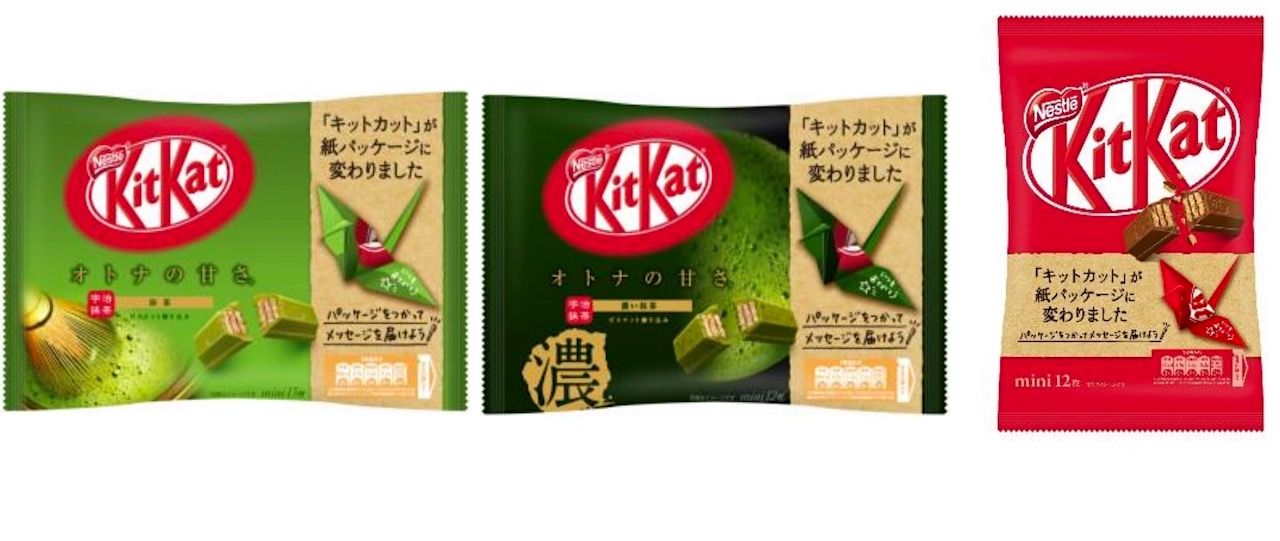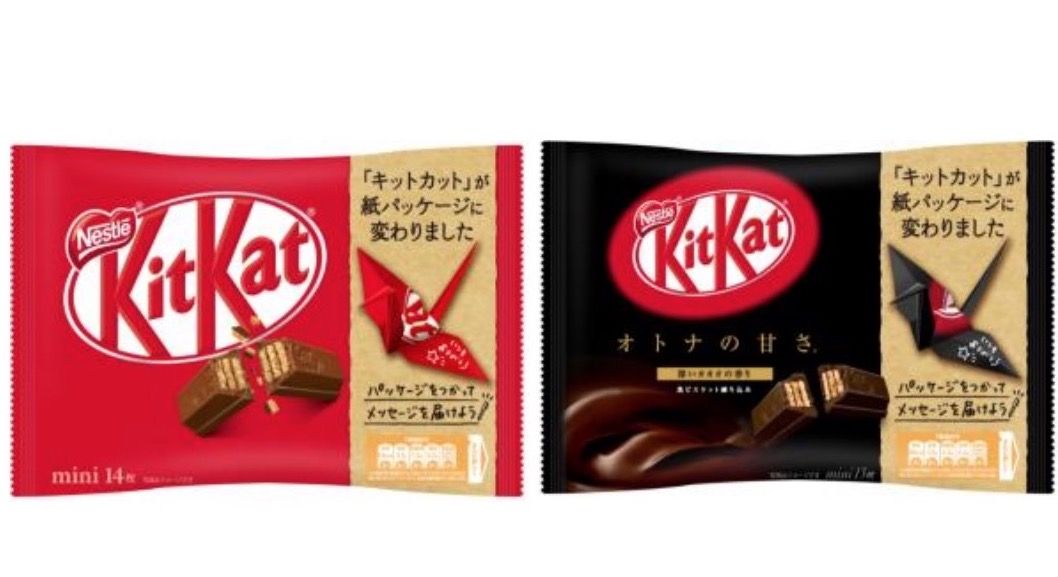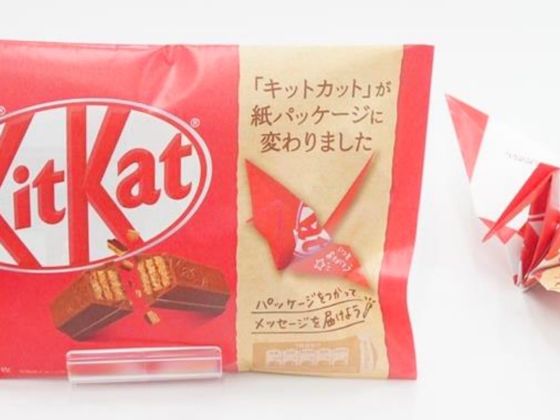Nestlé is embracing sustainability in a surprisingly creative way: The Japanese arm of the company, which produces KitKat bars famous for flavors like green tea, melon, and wasabi, plans to ditch plastic packaging and replace it with paper that can be folded into origami.

Photo: Nestlé

Photo: Nestlé
Instructions for how to fold an origami crane are also printed on the updated packaging. Mini KitKat bars will be the first to transition to the new paper packaging, but Nestlé plans to package its larger KitKats in origami paper by September 2020. By switching to paper packaging, Nestle hopes to save at least 380 tons of waste annually.
